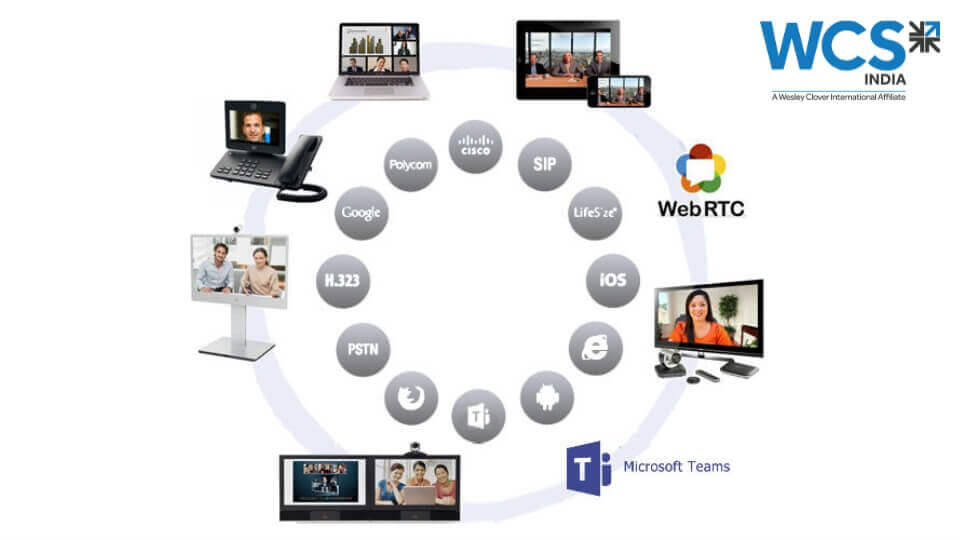On premise or Cloud Video Conferencing Solutions - Which one to Choose and Why?
 It is said, "There is no formula for success in the business. You just do the best you can." Keeping oneself updated with the latest technologies and incorporating that into your business is envisaged as the vital key to success. From the past few years, cloud video conferencing solutions have caused ripples in the world of business. Undoubtedly, no requirement of the lavish framework, no need of IT team and cost efficiency are some of the reasons why many large organizations are inclining towards cloud-based solutions. Certainly, there is a remarkable boom in growth in the cloud sector.
It is said, "There is no formula for success in the business. You just do the best you can." Keeping oneself updated with the latest technologies and incorporating that into your business is envisaged as the vital key to success. From the past few years, cloud video conferencing solutions have caused ripples in the world of business. Undoubtedly, no requirement of the lavish framework, no need of IT team and cost efficiency are some of the reasons why many large organizations are inclining towards cloud-based solutions. Certainly, there is a remarkable boom in growth in the cloud sector.
But at the same time, there are some benefits that on-premise video conferencing solutions provide that accrue their benefits in the business world. Since there can be no one solution to the different colors of problems, this blog aims to talk about the various aspects of on-premise and cloud video conferencing solutions.
Why most of the organizations incline towards Cloud Video Conferencing Solutions?
1. Interoperability - It eradicates hardware limitations and enables boundary-less communication. When a team present in one location has to communicate with someone at the other end, earlier, there were hurdles due to manufacturer differences, protocols, and infrastructure setup.
But, with the arrival of cloud-based video conferencing solutions, it is simpler to communicate with anyone, with whatever system or the device they are using. Any obstacle of different protocols gets instantly resolved as new interoperability features are released, making communications and connectivity better and easier.
2. No Specialized Staff Needed to Maintain Equipment - Undeniably, video collaboration and conferencing networking demand the support of specialized staff for maintaining the equipment. With cloud-based video conferencing solutions, the service provider looks after the equipment and that is considered as part of the Op-Ex model.
It basically implies that the other inhouse needs can be easily met as IT staff do not have to waste their time in any sort of cable work in the server racks. They can put their concentration in building up effective business strategies.
3. Highly Scalable - Cloud-based Video Conferencing is of great ease now. With cloud-based solutions, many users can communicate simultaneously with no hard limit on the number of calls. Scalability is again a major benefit that cloud-based video conferencing has to offer. One can scale it from 1 to 100 users according to the needs. It implies that these users can get easily connected to many people outside the organization on many different calls.
4. Network Management - If one goes for cloud-based video conferencing, centralized network management is considered as one of the pivotal benefits of this approach. You can avail the benefits of updated software, address books and network issues are also proactively managed.
Moreover, a cloud-based video conferencing solution avoids network congestion. With multiple points of presence, a cloud solution helps in improving latency for international conferences. However, connecting it with the MPLS network helps in giving the best quality and efficient speed.
5. No huge outgoing Cap-Ex (Capital Expenditure) costs involved - A cloud service is offered through a monthly subscription. It implies that there is no huge outgoing for any organization. With Op-Ex model, organizations can recognize the ROI of cloud services in the first few months and can spend proficiently which proves beneficial for their business.
Free Download: Discover how you can communicate face-to-face with our super-convenient video solutions.
A number of organizations have made their choice towards cloud-based solutions to avoid the need for expensive staff and to overcome the issue of a tight budget, but what about the other model? What if the organization is ready to buy everything on its own and not use the services provided by any third party or how does on-premise video conferencing create the difference.
Below are some of the points mentioned to talk about the benefits of on-premise video conferencing deployment that will help you in deciding which model is best suitable for the boom of your organization.
1. Security and Privacy of Infrastructure - Primarily, healthcare organizations and the ones in banking, military and financial sector have significant security fears and issues. They need to comply with strict regulations and data protection and cannot put their trust on third-party data centers. These risk-averse organizations have to go for on-premise video conferencing. Therefore, whenever security becomes an essential issue, on-premise is envisaged as the correct model to deploy.
2. Video Recording - In the case of recording conferences, there may be some sensitive information which must not go in the hands of any third party irrespective of how many strict security regulations they have followed. There are communications which are mission-critical to the business. Bringing in a third-party service provider may bring your data protection at some peril. Thus, to avoid any type of risks and to make sure that recordings are kept safe, a private on-premise video conferencing is considered a viable option.
Conclusion
Before putting your finger on any option of video conferencing services, there is a need to evaluate whether to go for cloud or on-premise video deployment and determine which one is perfectly compatible with your business and organizational needs. If you want to know what more is flowing in the latest VC solutions era, then don't skip Video Conferencing Solutions: The Definitive Guide. Get ready to extract a myriad of VC solutions ingredients!




